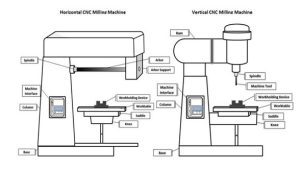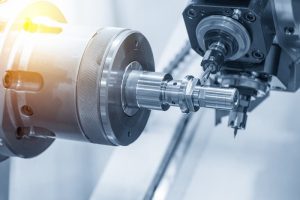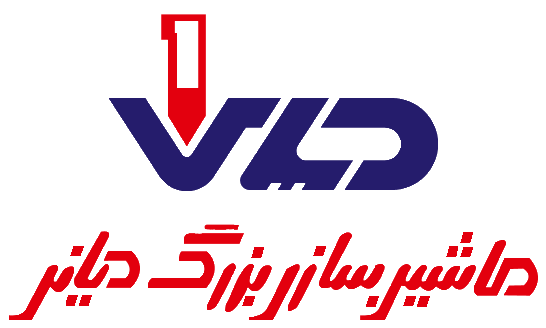Structure and Types of CNC Lathes
The CNC lathe consists of the following parts:
Head (front), tailstock assembly, CNC tools, bed, feeding system, hydraulic system, cooling system, lubrication system, chips, conveyor, and other components.


Horizontal CNC lathes can be classified based on their performance into three types: Economic CNC lathe, Standard CNC lathe, and Central CNC lathe.
- Economic CNC Lathe
This is a simple CNC lathe with a modified rotary feeding system of a conventional lathe, along with a stepper motor and a single-chip computer. The cost of this machine is low, and its automation level and performance are relatively weak, with machining precision not being very high. This machine is suitable for turning and processing rotating parts with low requirements.
- Standard CNC Lathe
The standard CNC lathe is specially designed in one machine to meet the requirements of the turning process and is equipped with a conventional CNC system. Its CNC system has strong functions, a high degree of automation, and precision in machining. This machine is suitable for turning and processing ordinary rotating parts. This CNC lathe can control two coordinate axes, namely the X-axis and Z-axis, simultaneously.
- Central CNC Lathe
Similar to conventional CNC lathes, but with an added C-axis and a power head. More advanced machines have tools that can control three coordinate axes: X, Z, and C. The control axis linkage can be any of (X, Z), (X, C), or (Z, C). With the addition of the C-axis and the power head, the processing capabilities of this CNC lathe are greatly enhanced. In addition to standard turning, this machine can perform radial and axial milling, surface milling, and create holes and diameters where the central line is not aligned with the center of the part’s rotation.

